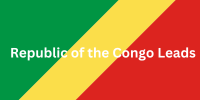The visual element of a decision tree helps you include more actions and the outcomes of each action – the consequences of each action or decision. Additionally, the decision tree flowchart allows you to include smaller details and create a step-by-step plan, so that once you choose the path you want to take, you already know what you need to do after making the decision.
If you keep reading, we’ll show you how to create a decision tree and analyze risk versus rewa
rd. We’ll also look at some examples so you can see how other marketers have used decision trees to become better decision makers.
How to create a decision tree
To create a decision tree , you can use something as simple as a paper and a pencil, although you can also create it with Excel or specialized software, as we will see later.
To create a decision tree, regardless of the format, you oman email data start with the problem that has arisen . Although we talk about a problem, it does not necessarily have to be a problem as such, but rather it is simply something that commits us to taking action, and these can be different.
Once you have the “problem” represented, you must outline the different options or actions to solve it, all of which must emerge from the problem using an arrow.
We have now represented the problem and the Úvod do spolupráce decisions. Now, for each of the decisions, two more arrows will emerge, one of them will point to the pros and the other to the cons of taking that decision.
For a decision tree to be worthwhile, you need to think through all the possible decisions and specify in great detail what the consequences will be, both positive and negative, i.e. the pros and cons.
Example of a decision tree in marketing
Let’s say you’re deciding whether to advertise your new campaign on social media or Google, i.e. Social Ads or Google Ads. You only have €2,500 to spend on it.
In order not to go into the many details that a decision like this can entail, let’s assume that we have analyzed that both options can be positive for the business.
to make a decision (root node). In this color palette, and consistent CG Leads style make your brand case, we want to invest in advertising to generate more sales of our product.
Next, you’ll need to draw arrows (branches) for each potential action you could take (leaf nodes).

